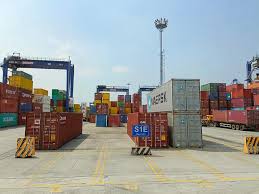Reduction in Trade Deficit
The Philippine trade deficit saw a notable decline of 8.8% in June 2025, a significant turnaround attributed to a rebound in both imports and exports. Preliminary data reveals that while imports had previously been on a downward trend, this change marks a pivotal moment for the Philippine economy.
Overview of External Trade
In June, total external trade escalated to $18 billion, reflecting an increase of 16.3% w porównaniu do $15.47 billion recorded in the same month the previous year. This month also signifies the sixth consecutive month of growth in trade, a promising sign for the nation’s economic landscape.
| Type of Trade | Value in June 2025 | Year-on-Year Growth |
|---|---|---|
| Imports | $10.98 billion | 10.8% |
| Exports | $7.02 billion | 26.1% |
Changes in Trade Deficit
The balance of trade for the month concluded at $3.95 billion, illustrating an improvement in the trade deficit, albeit slower than the 23.3% decline observed in May 2025. Compared to the 10.1% increase from June 2024, this data underlines the fluctuations witnessed in the recent trading environment.
Import and Export Trends
The rebound in imports, which constitute about 61% of the total trade, marks an important turnaround, growing from the previous downturn. A deeper look reveals:
- Imports: Rose by 10.8% year-on-year to $10.98 billion in June.
- This follows two consecutive months of decline.
- From January to June, imports climbed by 6% do $65.22 billion.
Meanwhile, exports have shown commendable strength, surging 26.1% aby dotrzeć $7.02 billion w porównaniu do $5.57 billion in June last year, with a notable annual increase of 13.2% for the first half of the year.
Key Export Categories
Among the distinct categories of goods traded, electronic products dominated both export and import metrics, continuing to be the backbone of Philippine trade.
- Electronic Products: Contributed 55.4% ($3.89 billion) to exports.
- Mineral Products: Followed with 7% ($491.03 million).
- Manufactured Goods: Rounded out the top three with 5.1% ($61.14 million).
Major Trade Partners
In terms of export destinations, the United States continued to lead the chart at $1.21 billion, constituting 17.3% of total exports in June. Significant trading partners included:
- Hong Kong: $1.07 billion (15.2%)
- Japan: $974.80 million (13.9%)
- China: $733.99 million (10.5%)
- Singapore: $311.96 million (4.4%)
Conversely, China remained the largest source of imports at $3.10 billion, reprezentujący 28.2% of total imports. Other major suppliers included:
- Japan: $870.15 million (7.9%)
- South Korea: $853.26 million (7.8%)
- Indonesia: $840.21 million (7.7%)
- Thailand: $626.93 million (5.7%)
Implikacje dla logistyki
The evolving dynamics of the Philippine trade landscape have profound implications for logistics. As demand for imports increases, logistics providers must prepare to handle greater volumes and complexities associated with the distribution of goods. This shift necessitates a focus on efficiency and cost-effectiveness, aligning closely with the services provided by GetTransport.com. With its range of affordable, global cargo transportation solutions, including home and office relocations, GetTransport.com provides a reliable avenue for managing logistics challenges.
Przemyślenia końcowe
In summary, the recent decrease in the Philippine trade deficit reflects a resilient economy marked by a resurgence in both imports and exports. This growth not only illustrates the country’s economic vigor but also emphasizes the importance of responsive logistics strategies to accommodate changing trade dynamics. While reviews and reports provide valuable insights, personal experience in logistics services ultimately shapes the best choices.
To ensure maximum efficiency and reliability in cargo transport, consider the extensive options provided by GetTransport.com. With attractive pricing and diverse solutions, GetTransport.com simplifies logistics for every transportation need. Book your ride today with GetTransport.com.

 Philippine Trade Deficit Shows 8.8% Decrease This June">
Philippine Trade Deficit Shows 8.8% Decrease This June">